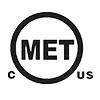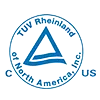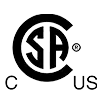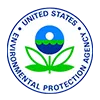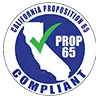Welcome to my ultimate guide on traffic signs and symbols! As a driver, being able to quickly recognize and understand road signs is an essential skill for safe driving. With this comprehensive guide, you'll learn about the most common types of traffic signs, what they mean, and how to respond to them.
The Purpose of Traffic Signs
Traffic signs serve a very important purpose they communicate laws, warnings, and guidance information to all road users. They are designed to be universally understood, which is why shapes, colors, and symbols are used in standardized ways. Traffic signs help to regulate the orderly movement of traffic, prevent crashes, and save lives.
Understanding and obeying traffic signs is not only safe driving practice, it's the law. Traffic signs must be followed in order to avoid penalties and ensure the smooth flow of traffic.
Categories of Traffic Signs
There are three main categories of traffic signs:
Regulatory Signs
Regulatory signs inform drivers of traffic laws and regulations that must be obeyed. For example, speed limit signs, no turn signs, one way signs, and do not enter signs. Most regulatory signs are rectangular with a black legend and border on a white background. Failure to obey them can result in a traffic citation.
Warning Signs
Warning signs alert drivers to upcoming road conditions and hazards ahead, such as turns, intersections, merges, bridges, animals, pedestrians, etc. They are usually diamond shaped with black legends and borders on a yellow background. Warning signs should not be ignored.
Guide Signs
Guide signs provide information to help drivers along their way by identifying routes, directions, distances, services, points of interest and more. Common guide signs include destination signs, distance signs, exit signs, and street name signs. They are typically rectangular or square-shaped with black text on a green, brown, or blue background.
Common Traffic Signs and Their Meanings
Here is an overview of some of the most ubiquitous traffic signs and signals and what they communicate:
Stop Sign
Shape: Octagonal
Color: Red background, white letters
Purpose: Come to a complete stop and yield the right-of-way before proceeding
Yield Sign
Shape: Triangular
Color: Red and white letters on a yellow background
Purpose: Slow down and yield the right-of-way to oncoming traffic before proceeding
Speed Limit Signs
Shape: Rectangular
Color: Black numbers on a white background
Purpose: Indicates the maximum legal speed allowed on that roadway
Do Not Enter Sign
Shape: Square
Color: White letters on a red background
Purpose: Traffic is prohibited from entering the roadway
One Way Sign
Shape: Rectangular
Color: White arrow on a black background
Purpose: Vehicles must travel only in the direction of the arrow
No Turn Sign
Shape: Square
Color: Black letters and slash on a white background
Purpose: Prohibits turning in the direction indicated
Wrong Way Sign
Shape: Square
Color: White letters on a red background
Purpose: Driver is traveling in the wrong direction and must turn around
Railroad Crossing Sign
Shape: Round
Color: Black X shape and letters on a yellow background
Purpose: Warns a railroad crossing is ahead
School Zone Sign
Shape: Pentagonal
Color: Black letters on yellow/orange background
Purpose: Indicates a school zone where reduced speed limits are in effect
Pedestrian Crossing Sign
Shape: Square
Color: Black stick figure on yellow background
Purpose: Signals a designated pedestrian crossing point ahead
Traffic Lights
Color: Red, yellow, and green lights
Purpose: Direct the orderly flow of traffic through intersections
Lane Use Signs
Shape: Rectangular
Color: Black or white arrows on a white background
Purpose: Conveys which lanes can or cannot be used for through travel or turning
Guide Signs
Shape: Rectangular or square
Color: Text on green, brown, or blue backgrounds
Purpose: Provide route, distance, destination, and service information to drivers
How to Respond to Traffic Signs
Since traffic signs are intended to promote roadway safety and efficiency, it's critical that drivers know how to respond appropriately to them. Here are some key tips:
Obey regulatory signs These signs are not mere suggestions, they inform you of traffic laws and regulations that must be followed. Failure to obey regulatory signs can result in fines and penalties.
Slow down for warning signs Take caution and reduce your speed when approaching areas with warning signs. This allows you to proceed safely given the road conditions or hazards ahead.
Use guide signs Follow the information on guide signs to help navigate your way to a destination. For example, which lane to use, which exit to take, where services are located, etc.
Look and plan ahead Always be on the lookout for signs far in advance. Seeing them early gives you more time to respond appropriately.
Pay attention to sign details Note exactly where signs are located, what they depict, the words, symbols, arrows, etc. This helps you respond correctly.
Prepare to act Know what action you need to take for a given sign and be ready to execute it. For example, braking for a stop sign or decreasing speed for a curve warning.
Don't get distracted Avoid taking your eyes off the road for long to check a map or GPS. Stay focused on road signs to react safely.
Benefits of Traffic Signs
When traffic signs are properly placed and followed, they provide many important benefits:
Increase road safety by warning drivers of possible hazards or risky conditions
Prevent collisions, injuries, and fatalities
Reduce traffic violations and crashes caused by disobeying traffic laws
Promote the orderly flow of traffic and reduce congestion
Provide clear information to drivers on routes, directions, and locations
Help drivers safely navigate to their destinations
Warn drivers of speed limits so they avoid reckless driving and speeding fines
Notify drivers of pedestrian crossings so they drive cautiously
Traffic Signs by Country
While traffic signs around the world use similar designs, shapes and colors, there are some country-specific differences too.
In Europe, regulatory signs tend to have black circles with red borders and slashes. Warning triangles are also yellow with black borders and symbols.
UK warning signs are mostly triangular but with black text on a white background instead of black on yellow.
Japan's road sign system uses extensive pictograms along with Japanese characters. They have thick green borders on regulatory signs and thick yellow borders for warnings.
Australia's regulatory signs have a thicker red border while their warning signs have black text and symbols on a yellow background like the US.
So if driving abroad, take time to learn the traffic signs of that country. The conventions may be slightly different than what you're used to.
Mnemonic Devices to Remember Signs
Mnemonic devices can help ingrain traffic sign meanings into your long-term memory:
Stop Stop signs are octagonal like a STOP sign
Bear Right Curvy right arrow on yellow diamond sign looks like bear ear
RR Xing The two letters R look like railroad tracks crossing
Drive Friendly The hand wave on pedestrian signs looks friendly
Make up your own silly phrases, songs, or associations to help recall signs you find tricky.
Conclusion
I hope this full guide has helped demystify traffic signs and signals! The next time you encounter them on the road, remember to slow down, read them carefully, and take the proper actions. When all drivers understand and obey traffic signs, it fosters a safer driving environment for everyone. Feel free to reference this article on the go if you need a refresher on sign meanings. Safe travels!


